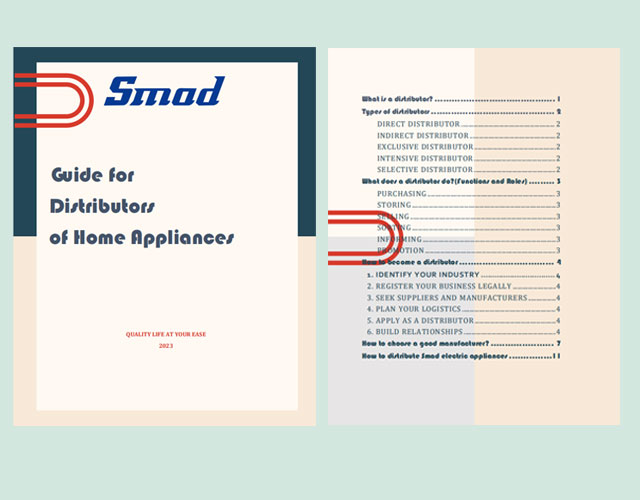Sept. 21, 2022 / Industry News
Refrigeration is responsible for preserving beverages and food for longer
periods and ensuring the conservation of medicines and other medical
applications. Thus refrigeration is a piece of essential equipment everywhere,
from residential and commercial establishments to medical laboratories and
hospitals.
Over the years, technological evolution has made it possible to meet demands
from different groups of people. As requirements change fast, refrigeration
evolves rapidly. In this context, we will discuss the new trends that arise from
refrigeration and what we can expect from the future refrigeration.

Energy Efficiency
With the increase in the world population and, consequently, in the amount of
refrigeration equipment needed to maintain this rate of growth, it is necessary
to invest in options that provide greater energy efficiency, in order to exploit
the least of the planet’s natural resources possible and reduce the
environmental impact.
Therefore, options that consume less electricity become a trend, regardless
of the refrigeration type. After all, the benefits can be seen everywhere, from
homes to commercial refrigeration.
Variable capacity compressors, also known as VCCs or inverter technology, can
be considered part of this trend. This is due to its speed control capability:
when more cooling is needed, the working speed increases, but when the ideal
temperature is reached, it decreases. Thus, energy consumption is reduced by 30
and 40% compared to conventional compressors.

Natural Refrigerants
With increasing concern about sustainability, both by the end consumer and
the industry, the use of a natural refrigerant is a trend that is gaining more
and more space, promoting less environmental impact and further increasing the
efficiency of the systems. Natural refrigerants are becoming a global
preference.
Synthetic options like hydrofluorocarbon (HFC) can deplete the ozone, causing
environmental damage. To combat climate change, many companies made the switch
to natural refrigerants like ammonia or CO2. Over the next few years, we’ll
likely see a boost in sustainable options as environmental concerns become more
prominent.
CO2-based systems are especially likely to increase. Not only is this gas
natural and sustainable, but it’s energy-efficient and not flammable. It may
take a while for the majority of stores to switch over, but this shift will
slowly become apparent.
Reducing refrigerant abound
Refrigerant costs seem unlikely to fall shortly. Supplies of traditional
refrigerants are being reduced, and new alternatives being developed will likely
carry the price premium that comes with having limited suppliers and
competition.
But it is not only the increase in prices that is an issue. Fluctuating costs
and supply mean that designing for lower refrigerant charges also reduces a
manufacturer’s exposure to risk should things change at short notice.
Reducing charges can also significantly improve installation flexibility. A
reduced charge means A2L, A2, and A3 refrigerants can be used in a greater range
of settings too — as it becomes easier to satisfy standards.
And easier installation comes with easier servicing. By making units simpler
and lower in charge, servicing and maintenance can be carried out more quickly
and safely — further reducing the total cost of ownership and offering a
competitive advantage.

Noise Reduction
A noisy fridge can be a constant annoyance. The noise coming from your
refrigerator is almost always produced by the compressor–given that it is one of
the few moving parts. But, as we detail ways to quiet compressor noise before,
you will notice that some of the suggestions deal with other components and
issues that serve to amplify sounds, rather than create them. In fact, variable
speed compressors are the ideal options. In addition to high energy efficiency,
these models also offer very low noise levels. Compared to the fixed speed
compressor, the variable speed compressor operates with 15 to 20% less noise. In
the future, not only refrigerators, the same goes for equipment in environments,
such as research laboratories and hospitals, which are naturally quieter.
Consider Size
Most refrigerator configurations come in a range of sizes and capacities. As
for capacity, most manufacturers recommend 19 to 22 cubic feet for a family of
four. But COVID-19 has changed many families’ shopping habits, and more and more
families tend to do big weekly shopping trips or buy in bulk. Thus, a capacity
of up to 30 or 33 cubic feet is quite popular in 2022.
The amount of usable storage is often less than the amount claimed and don’t
forget to remind the customers to measure where they plan to put the
refrigerator, including the width and height of any doorways, hallways,
stairways, etc., that the new one will have to travel through to get to the
kitchen. Allow room for the refrigerator’s doors to swing open and for a 1-inch
clearance around the sides and back for adequate airflow.
The refrigerator market value is expected to register considerable growth
over the projected period, driven by the presence of numerous technological
upgrading. If you want to get into the industry, try to collect detailed
information and find refrigerator manufacturers that meet the requirements and
apply the new technologies.
It is a good idea to be a distributor rather than manufacture a refrigerator
yourself. By doing so, you will take fewer risks and the overall profits would
be higher. If you’re eager to gain a deeper understanding of the industry, we
invite you to reach out to us through our convenient one-line chatting system or
by filling out a simple form. By doing so, you can effortlessly
request the necessary file that contains a wealth of industry information. We
understand that knowledge is power, and we are committed to equipping you with
the insights you need to navigate and excel in the electric appliance
industry.



